If you buy through our links, we may earn an affiliate commission. This supports our mission to get more people active and outside.Learn about Outside Online's affiliate link policy
This Home Practice Will Help You Close (Yes, Close) Your Heart While You Grieve

At 27 years-old, I lost my mother to lung cancer. When she was just weeks from passing and at her worst, a friend tried to comfort me by saying “Chin up.” I knew he was trying to help, but lifting my chin upward was literally the last thing I (or my body) wanted to do.
When we are in grief, the body naturally wants to cave in. There is a heaviness. As Michelle Obama said of her father’s death in her book Becoming, “It hurts to live after someone has died.” If someone you love is near death, it hurts to live before they have died, too.
Yet people frequently encourage us to “keep our heads up” when we are going through tough times. Is that really how to cope with grief? Or is it just something people say when they are at a loss for words? Instead of trying to make each other feel better in the face of loss, what if we gave ourselves permission to hang our heads for a little while? Practicing yoga for grief involves exactly that.
Practicing Yoga to Protect Your Heart
In yoga, we practice a lot of sequences that open the heart. Rarely do we hear teachers encourage us to close our hearts.
Yet you may find yourself resisting even the most passive backbends when you’re feeling vulnerable. The body’s desire to curl inward is an evolutionary response to stress and trauma—a way to protect the vital organs. I have also come to believe that our impulse to fold in when grieving is a way to keep the pieces of the heart together after it breaks.
That’s why “closing” our hearts may be the most important thing to do when exploring how to cope with grief.
A Yoga for Grief Sequence
If all you do is unroll your mat and rest in Child’s Pose today, great. If you feel like moving a bit more, here is a sequence to help you rest your heart.
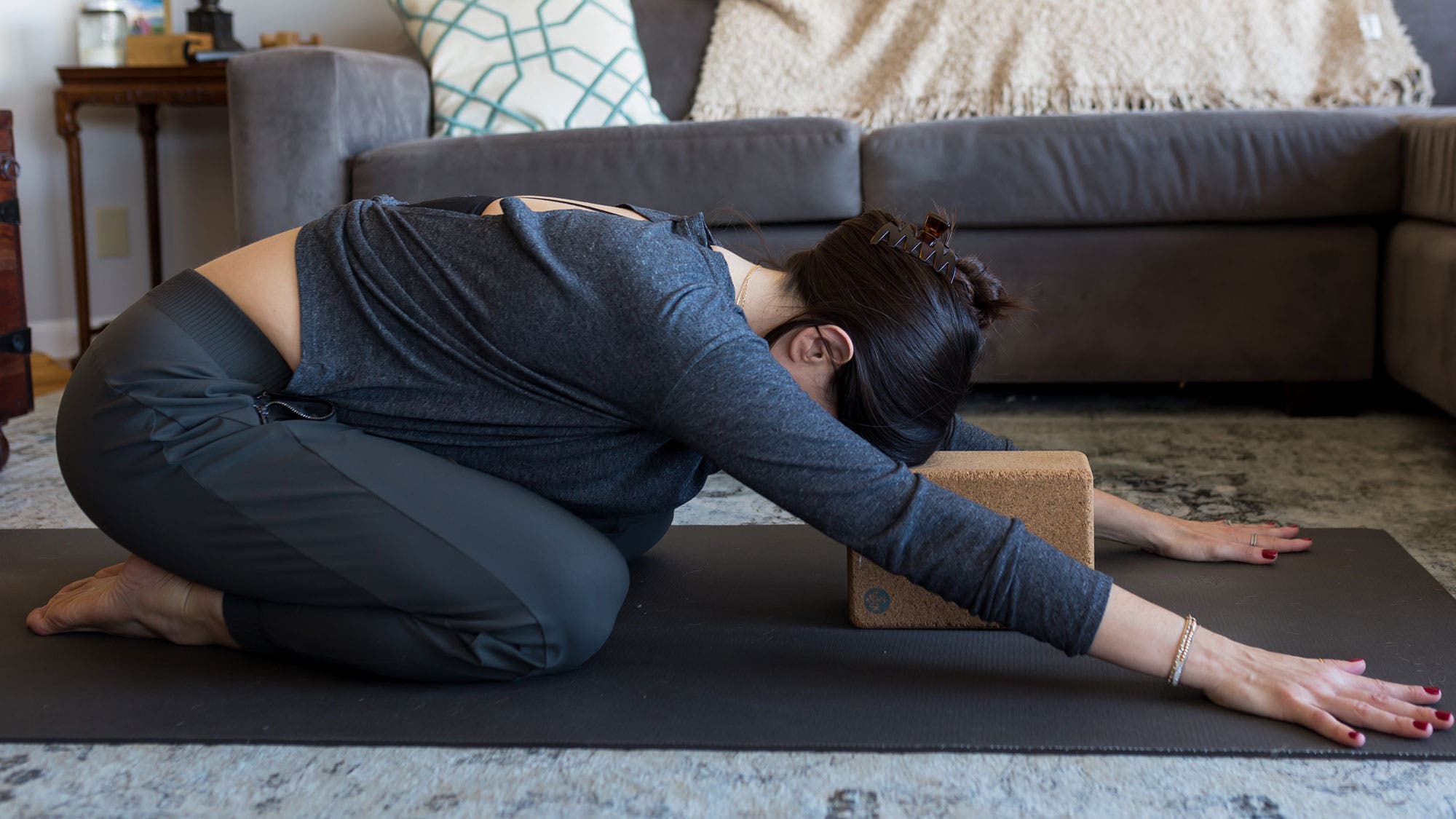
1. Child’s Pose (Balasana)
This posture encapsulates what the body naturally wants to do when under duress: curl inward.
How to: Kneel on the mat. Bring your big toes together and separate your knees wide. Lower your heels toward your hips, walk your hands forward on the mat, and rest your forehead on a block or the mat in Child’s Pose. Press your palms into the mat or stay on your fingertips. Breathe here.
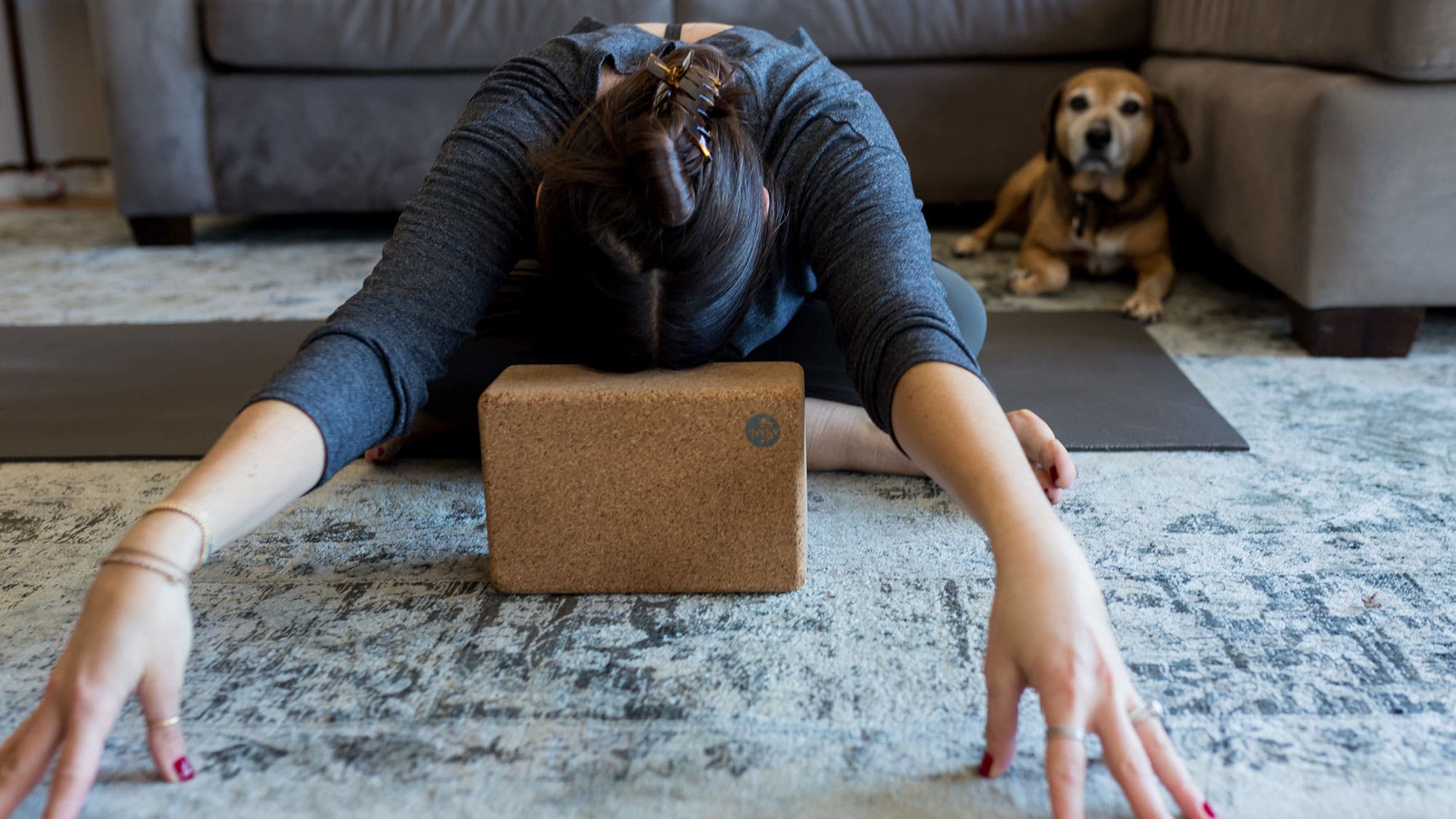
2. Easy Pose (Sukhasana) Variation
The muscles throughout our bodies tend to contract and tighten as a result of emotional trauma. Longheld stretches, such as this hip-opener, can initiate the release of some of that tension
How to: Sit cross-legged on the mat in Easy Pose and flex your feet. As you inhale, lift your arms toward the ceiling; as you exhale, fold forward over your legs. Rest your forehead on a block or the mat. Stay here for 25 long breaths.
To come out, inhale and slowly lift your chest. Switch sides so the opposite leg is in front and repeat.
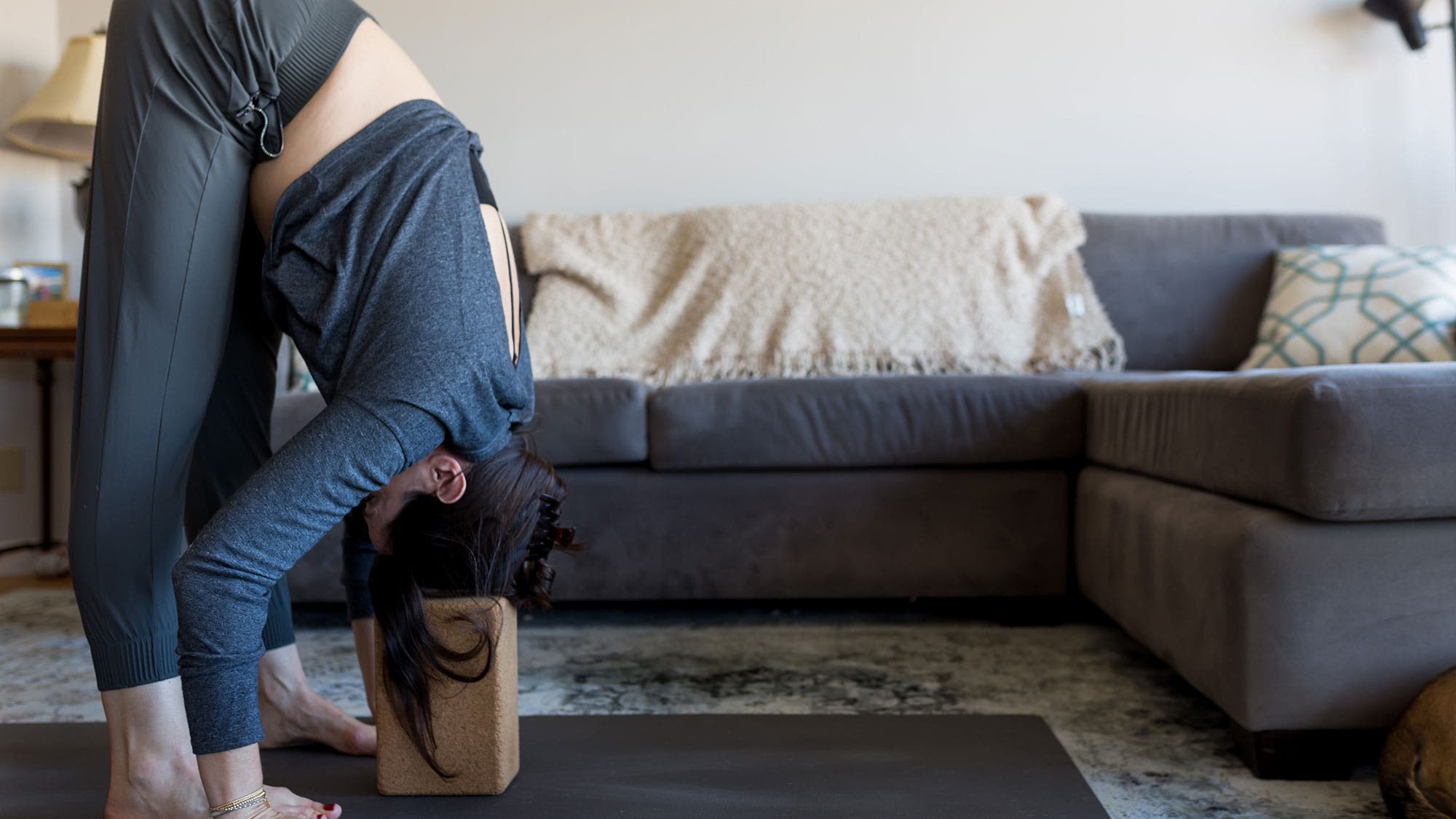
3. Standing Forward Fold (Uttanasana)
Your leg muscles are among the strongest in your body. When you reconnect to their strength and flexibility, you reconnect with your own inner power.
How to: Stand with your feet hip-width apart. As you exhale, hinge forward from your hips toward your legs. Bring your hands to blocks, your shins, your feet, or the mat or grasp opposite elbows. If it’s comfortable, rest your head on a block on its tallest height. Otherwise, let your head hang in Standing Forward Bend. Release your shoulders as you pause here for 15 breaths.
To come out, slowly roll up, letting your head be the last thing to rise. Pause for a few breaths before moving on to the next pose.
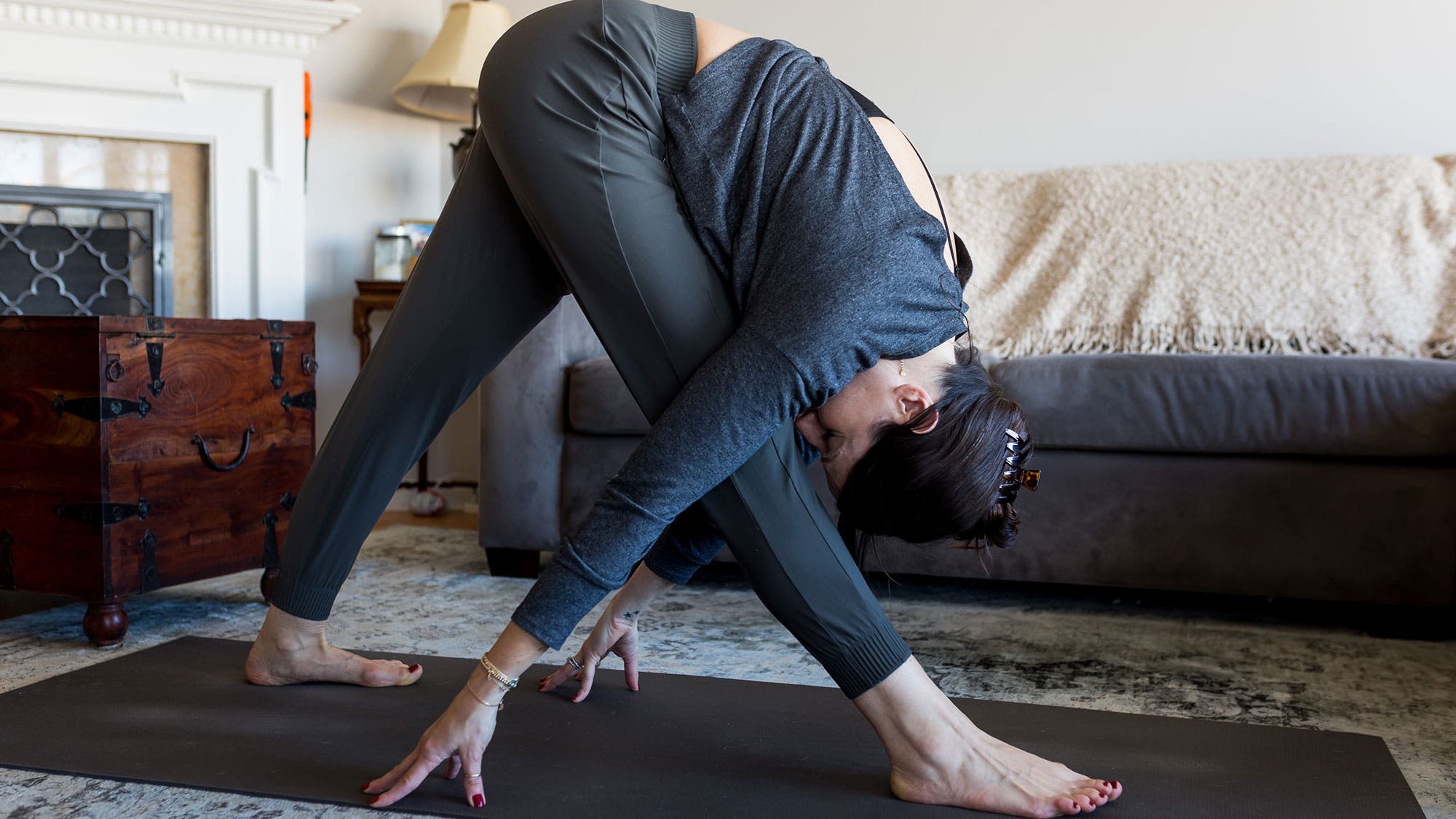
4. Pyramid Pose (Parsvottanasana)
When you’re learning how to cope with grief, there is no one-size-fits-all approach. However, Pyramid Pose is a reminder that you can allow yourself to feel more deeply when you have a solid support system holding you up.
How to: Stand at the top of the mat. Exhale and step your left foot back and slightly out to the side about 3 feet. Turn your back foot slightly in. Place your hands on your hips and as you inhale, lift your chest. As you exhale, fold forward over your legs, placing your hands on blocks or on the mat as you reach your chest toward your front foot in Pyramid Pose. If it’s comfortable, walk your hands toward your back foot. Stay here for 20 breaths.
To come out of it, rise halfway and place your hands on your hips. Then inhale as you rise all the way up to standing. Step your feet together. Then step your right foot back and repeat on the opposite side.
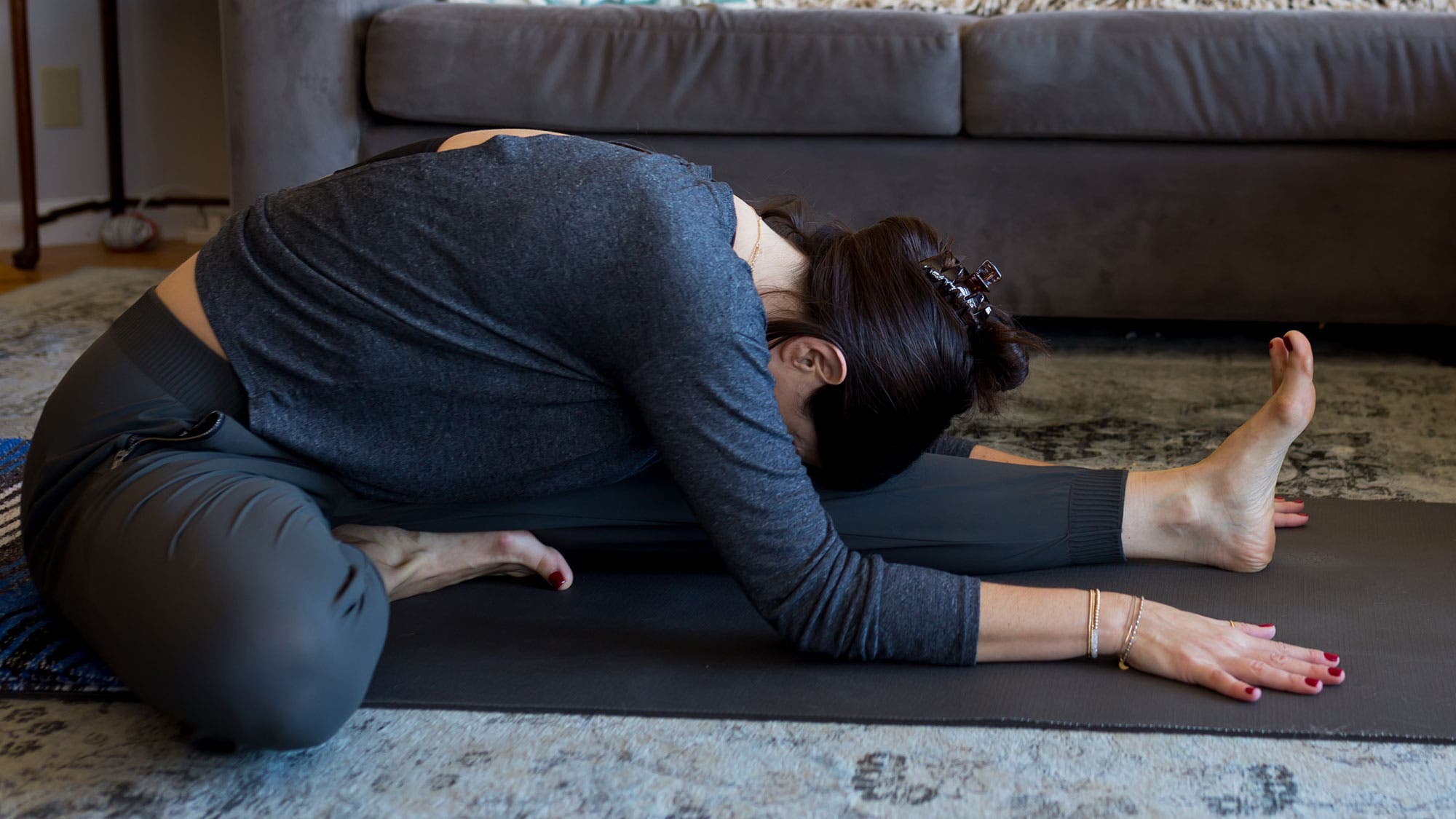
5. Head-to-Knee Pose (Janu Sirsasana)
Whether you rest your head on your leg or a block, you can find comfort in the fact that you are your own foundation, in this pose and in life.
How to: Sit on a folded blanket with your legs straight in front of you. Bend your right knee and bring your foot against your inner left calf or thigh. As you inhale, reach your arms toward the ceiling. Exhale and fold forward over your left leg. Place your hands or fingertips on the mat on either side of your left leg or rest your elbows on the mat. Instead of rounding forward, reach the top of your head toward your left foot or rest it on a block in Head-to-Knee Pose. Stay here for 30 breaths.
To come out, inhale as you lift yourself to a seated position. Extend both legs straight in front of you and pause for a moment before switching sides.
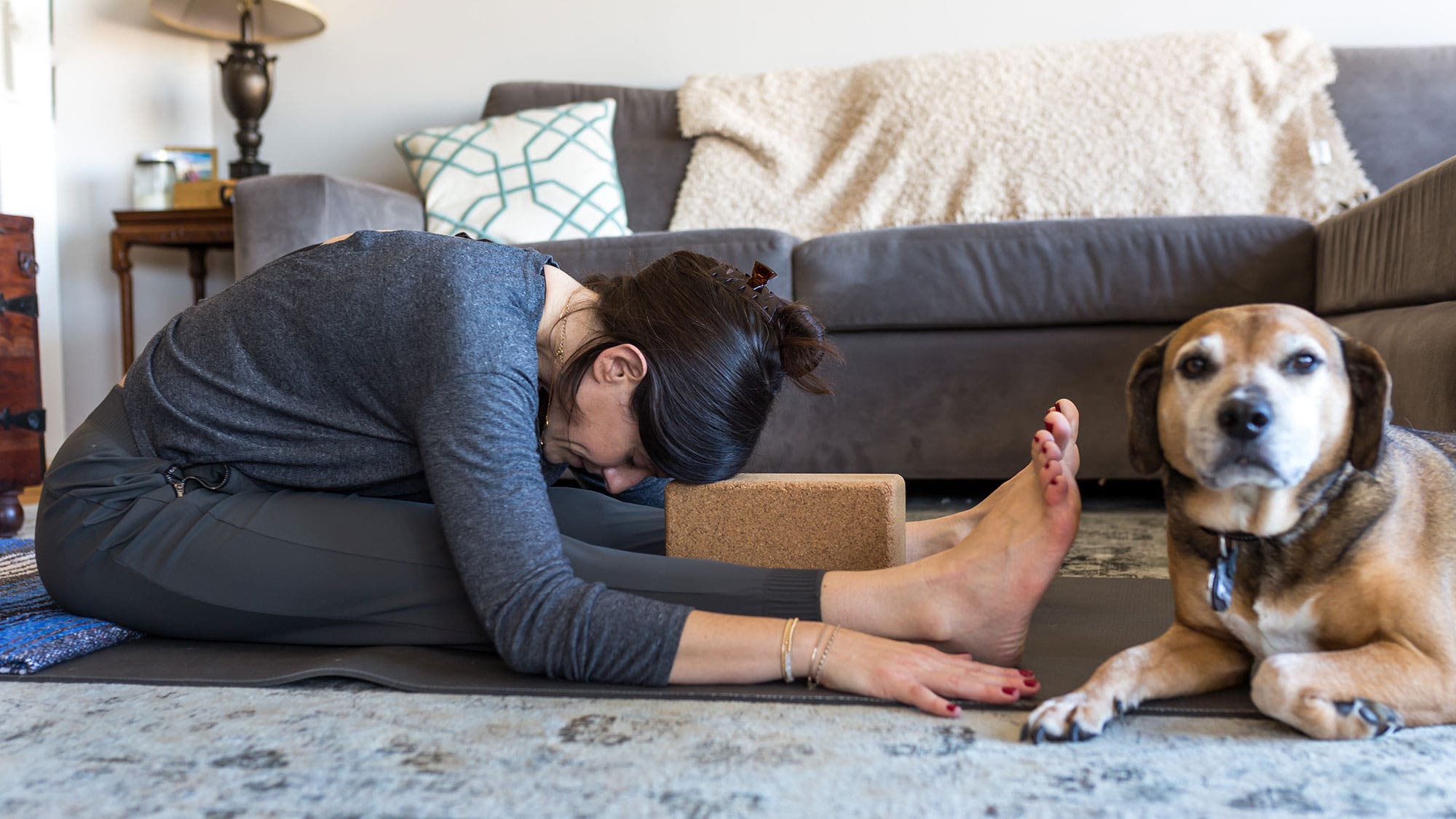
6. Seated Forward Bend (Pascimottanasana)
Your postural muscles always work so hard to “keep your head up.” But in this restorative version of a common forward fold, you can allow them to release and experience a moment or two of reprieve along your entire back body.
How to: Sit on the mat with your legs straight in front of you. Separate them slightly and place a block between your legs, closer to your shins. As you inhale, reach your arms overhead. As you exhale, fold forward over both legs in Seated Forward Bend. Raise the block to its medium or tallest height and rest your forehead on it. (You may need to stack two blocks or place a folded blanket on a block.) Reach your arms forward alongside your legs with your palms resting on the mat or grasp your calves or feet. Take 30 breaths here. To come out of it, slowly roll up to a seated position.
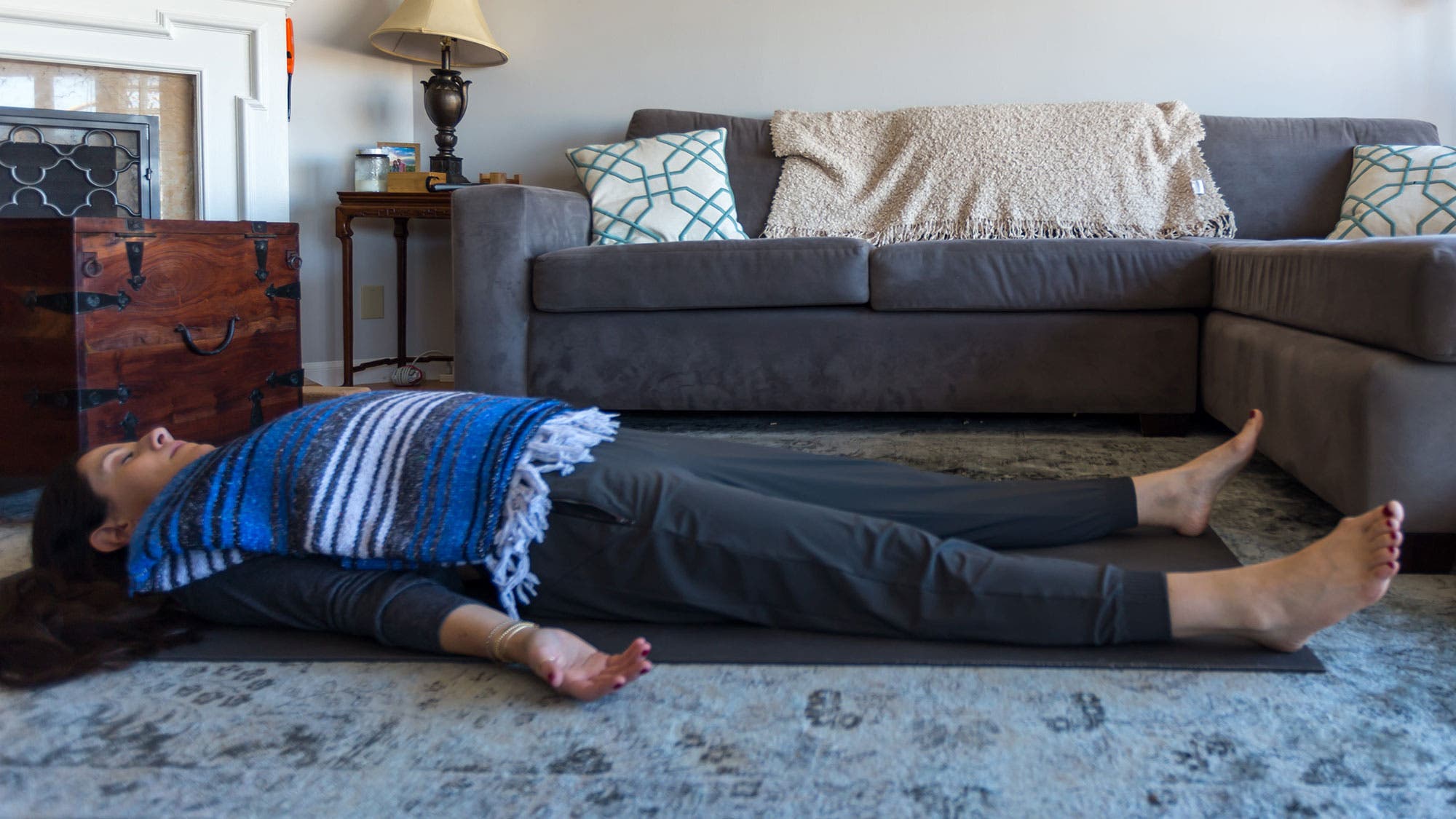
7. Corpse Pose (Savasana)
Our final resting posture is a vulnerable shape, but practicing with a blanket placed over you can help you feel more protected as you gently open your body (and your emotions) back up to the outer world. Move gently to symbolize how you will treat yourself during this delicate time.
How to: Come onto your back and separate your legs wider than hip-width apart. Place a folded blanket over your chest and belly. Rest your arms by your sides, palms facing upward for an open energy or downward to remain closed. Close your eyes in Savasana or keep them open and softly gaze at a fixed point on the ceiling.
If you prefer a more closed-off posture, come into reverse Savasana by lying on your belly and turning your head to the side so one cheek is on the mat. Turn your head to face the other direction halfway through.
Breathe deeply in your chosen variation for 7-10 minutes.
To release, lift your arms overhead, bend your knees, and roll to your right side. Stay here in the fetal position for a minute or longer, then press your hands into the mat to sit up. Sit quietly with yourself for a few minutes. Notice whether practicing yoga for grief brings up any emotions and simply let them be.
This article has been updated. Originally published February 26, 2019.